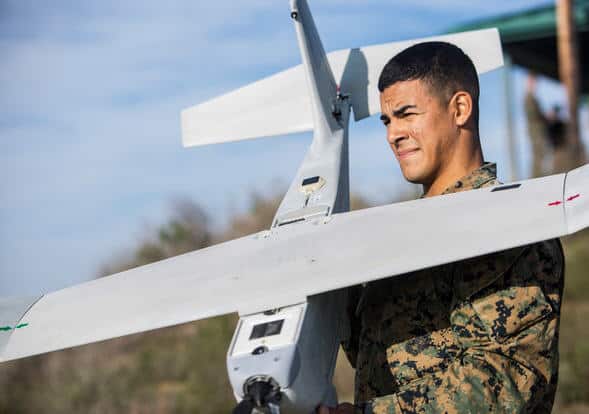
By Cpl. Juan Bustos | Marine Corps Base Camp Pendleton
MARINE CORPS BASE CAMP PENDLETON, Calif. —
On Dec. 18, 2018, U.S. Marines from Marine Corps Installations-West (MCI-W) – Marine Corps Base (MCB) Camp Pendleton, 1st Marine Division and airmen from the 196th California Air National Guard conducted Operation Wild Buck (OWB), to test the use of Unmanned Aircraft Systems (UAS) to monitor Camp Pendleton wildlife populations and develop tactics, techniques, and procedures for using UAS during emergency operations on the installation.
The operation involved two types of UAS. The first was a low-flying, hand launched, and battery operated RQ-20B Puma which was controlled on the ground at Camp Pendleton, and the second was a high-flying, RQ-9 Reaper, launched from Las Vegas and controlled via satellite link from March Air Reserve Base in Riverside, CA. Both UAS sent back video feeds to Camp Pendleton’s Emergency Operations Center (EOC), where installation leadership observed and coordinated the operation.
During the operation, scouts on the ground from 2nd Battalion, 11th Marine Regiment passed information on wildlife back to Camp Pendleton’s EOC, where it was relayed to Puma UAS operators from 2nd Battalion, 4th Marine Regiment and Reaper operators from the 196th California Air National Guard.
The employment of multiple-integrated UAS was tested as a proof of concept during OWB. The success of the operation proved that the methodology used to track wildlife can also be used to locate lost or unauthorized personnel, coordinate the management of wildland fires and provide situational awareness during disaster response on Camp Pendleton. The tactics, techniques and procedures developed during the operation will provide the installation Commanding General with a better sense of awareness and a valuable framework to aid decision making during times of crisis on the installation and in its neighboring communities.
“What we’ve learned from this survey, is that everyone involved in OWB is learning from the other systems that are being employed. Whether it’s command and control systems here [or] the capabilities of the other UAS” said Col. Jeffrey Holt, deputy commander, MCI-W, MCB Camp Pendleton, “we are able to display [the UAS’s ] video feed on our screens and share that information [with] others.”
In addition to OWB’s ability to assist in crisis and contingency operations, the exercise was also conducted to be able to provide aid to the Game Warden Section (GWS) on Camp Pendleton as a cheaper, safer and more effective way to conduct the population counts instead of utilizing costly aviation assets for site surveys.

















